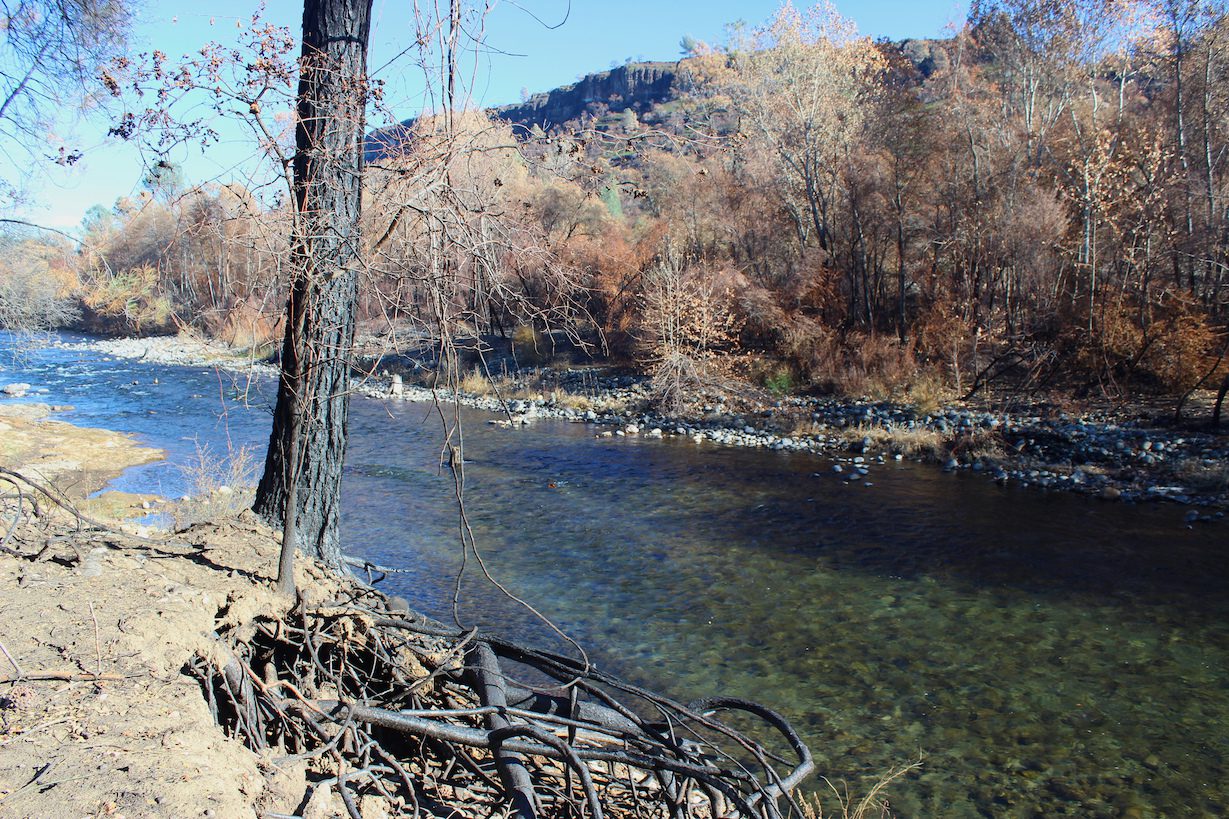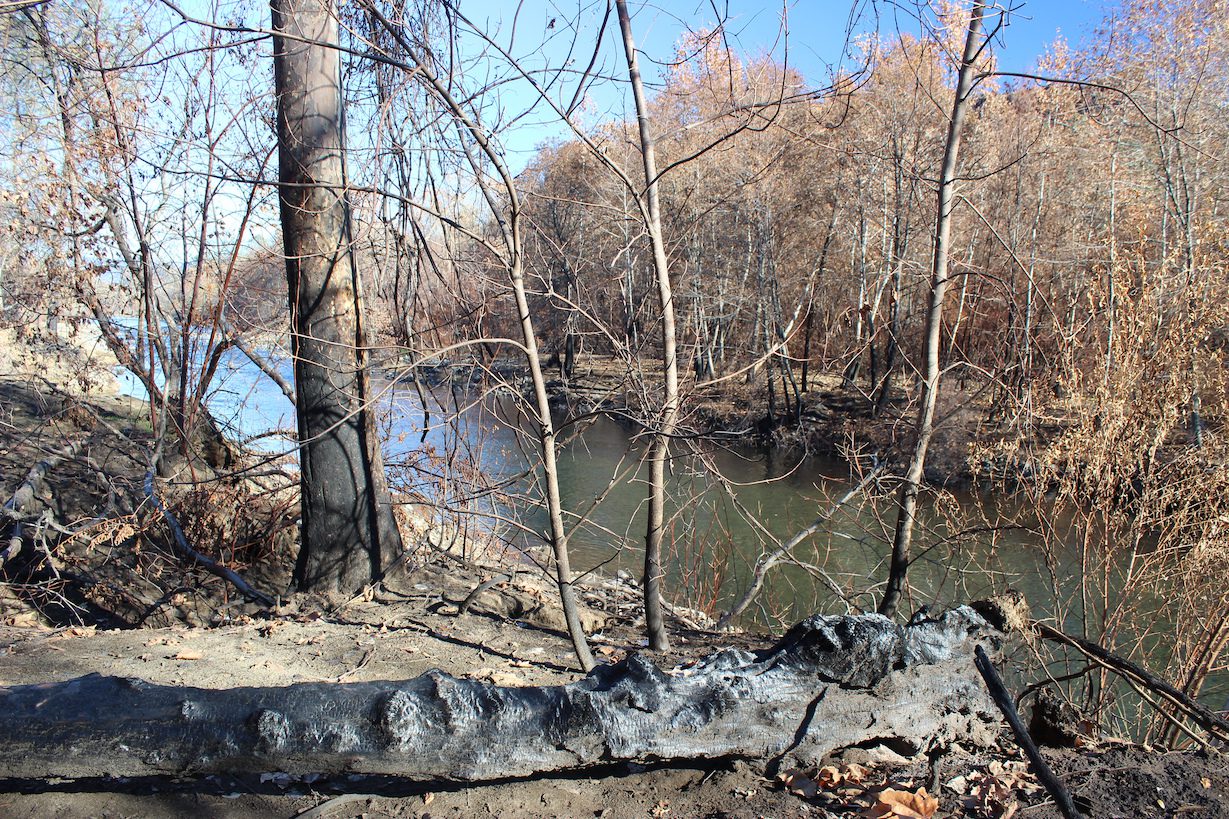Wednesday December 12, 2018

In recent years, some of the most destructive wildfires in documented history have ravaged large swaths of the Golden State, taking an unprecedented toll on human life and property. The first winter rains ushered in sighs of relief from first responders and washed the smoke particles from the air, but the recent fires’ impact on watersheds has only just begun. Wildfires affect streams and their inhabitants in many ways. The first rains do not effectively absorb into burned soil, and run off instantly instead of soaking in. Stripped hillsides are prone to erosion and destabilized ash, sediment and debris run down to turn creeks and rivers into brown, churning torrents. As sediment fills the spaces between gravel in riverbeds, it reduces the flow of water through the gravel and with it a vital steady supply of oxygen. This puts buried salmon eggs and countless invertebrates at risk of suffocation. Stream dwellers that survive the initial onslaught of toxic ash, debris and muddy water after a fire then face further challenges. Many miles of scorched riverbanks are now devoid of the streamside plants that provide shade – and keep the water cooler – during California’s long, hot summers. This also means a loss of falling leaves, which serve as a source of food for fungi, and in turn invertebrates and fish. Increased exposure to sunlight warms the water, which increases the metabolism of fish. To offset this higher energy demand, fish have to eat more, but less food is available.

Fish populations are typically resilient to natural disturbance and do recover following the initial effects of fires, but not immediately. As landslides and large woody debris wash into streams and “reorganize” river habitat by creating new pools and gravel bars, streamside vegetation grows back and the food web slowly rebuilds. Just as for the human populations that suffered tragic loss of life, property, and livelihood, the effects of large wildfires will be felt for many years to come by animal populations on land and under water. In the current episode of the Barbless Podcast, one of our biologists had the opportunity to talk with the hosts and the director of Friends of Butte Creek in the wake of the Camp Fire. Have a listen to hear about the impacts of fires on streams, fire-related risks to the Central Valley’s largest population of threatened spring-run Chinook salmon, and efforts to minimize the destructive impact of the fire on life in and along the stream.
